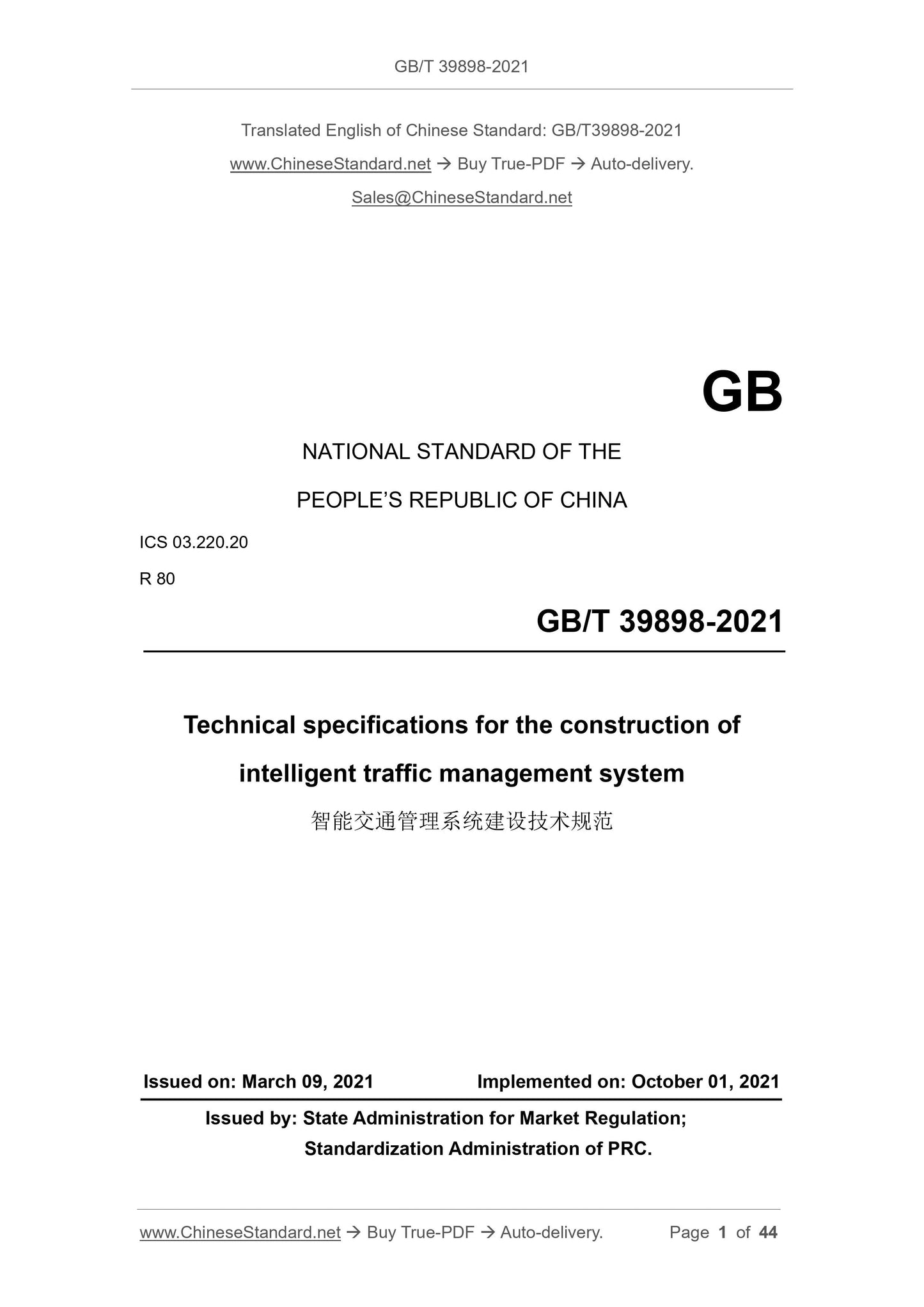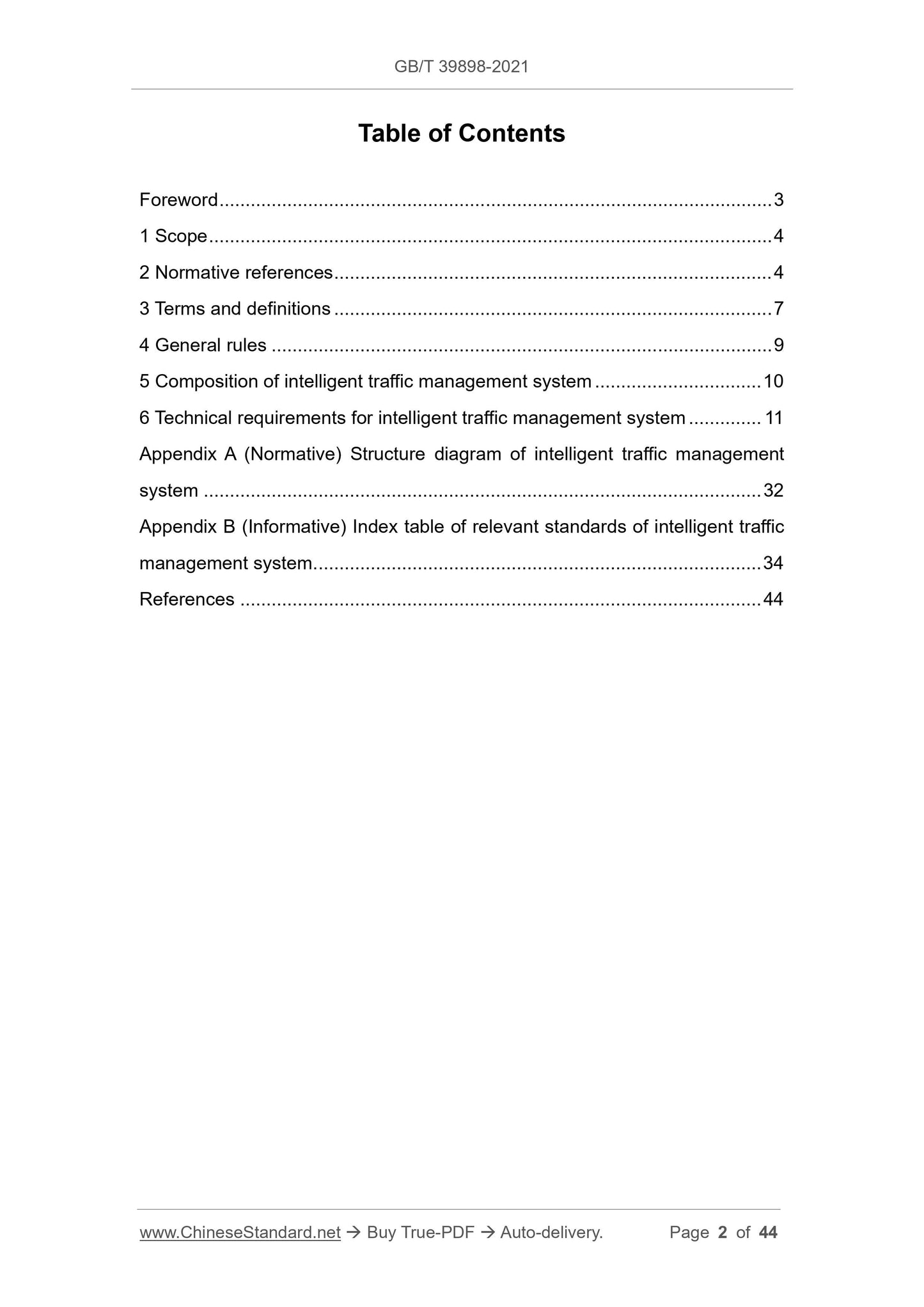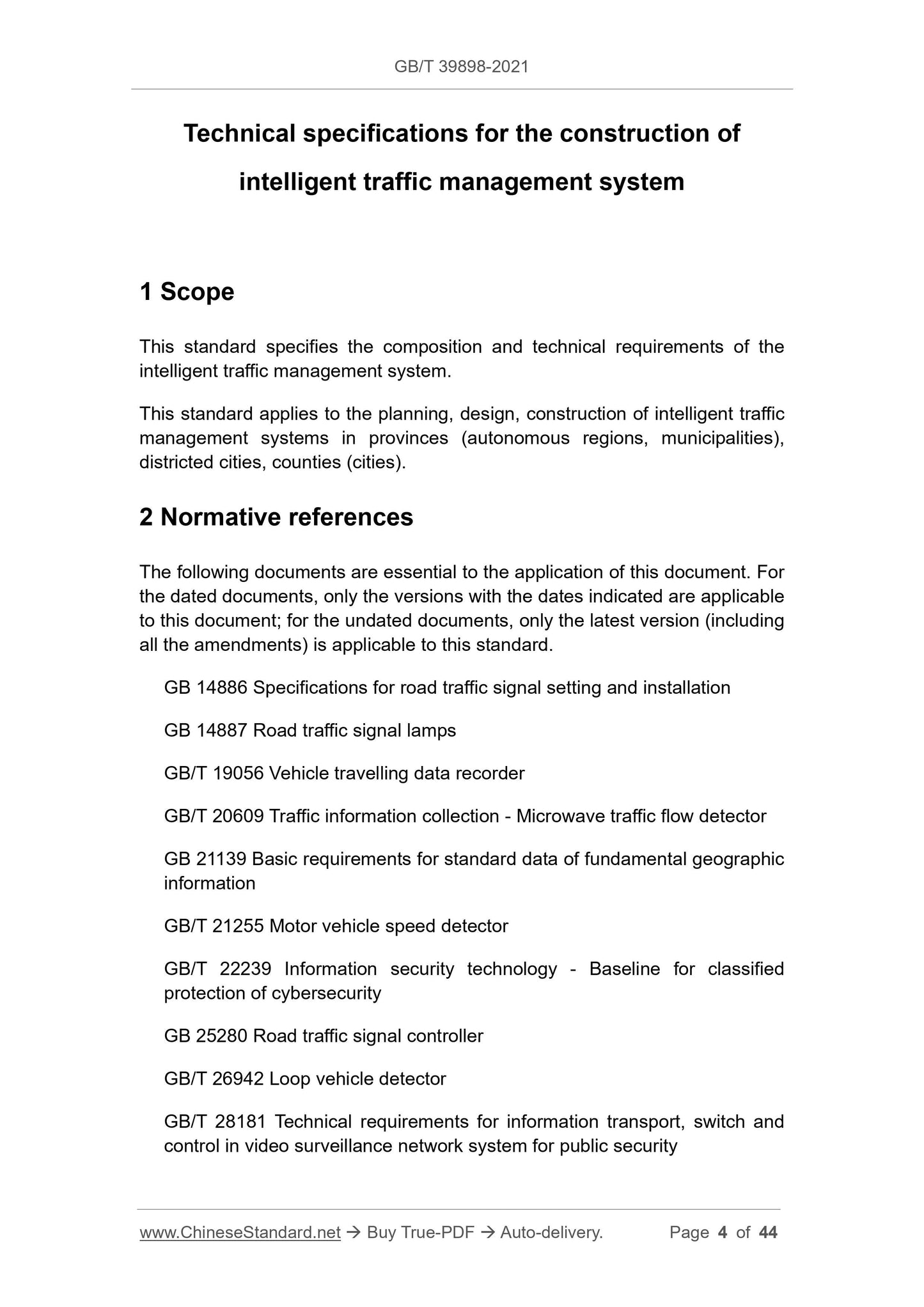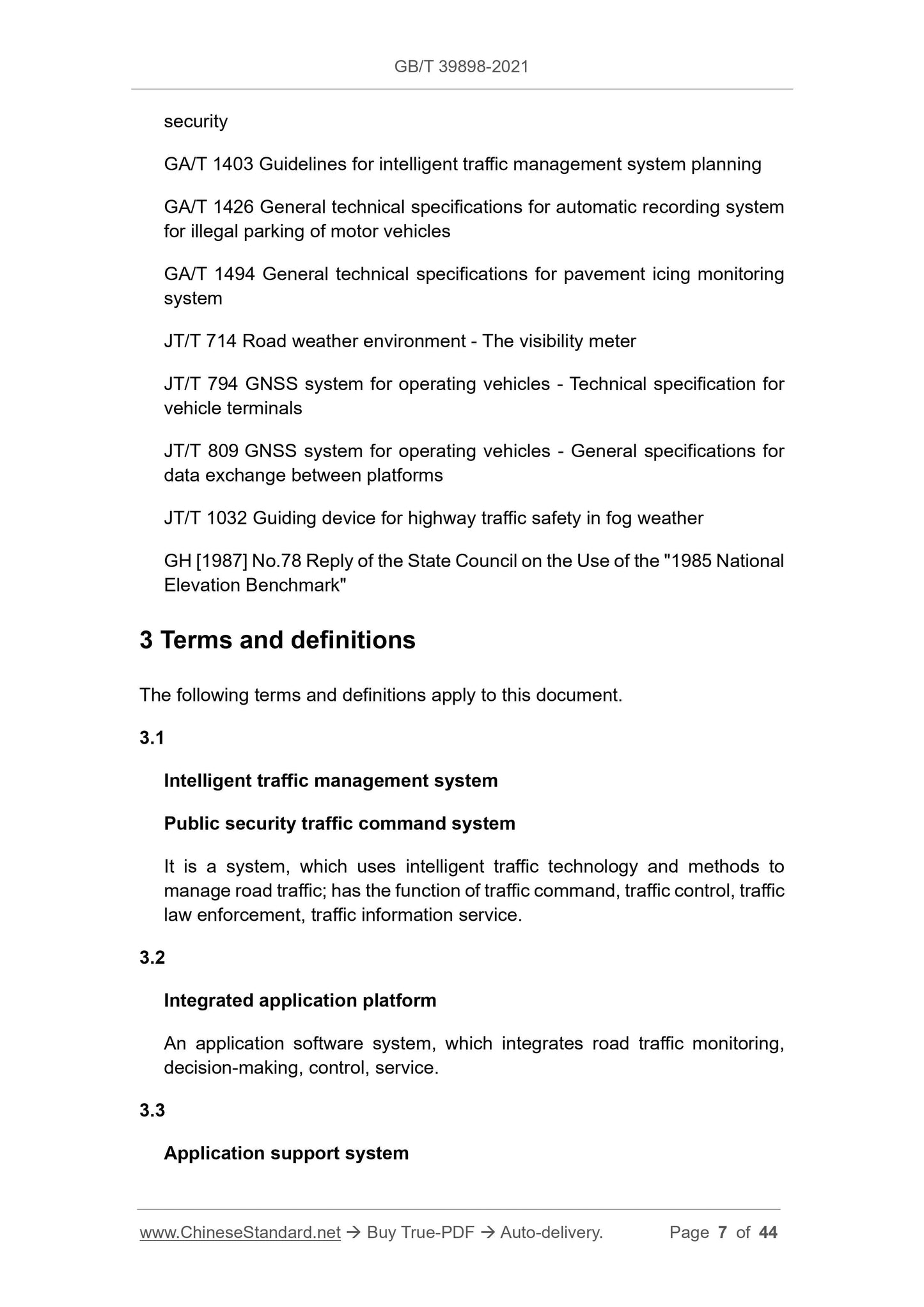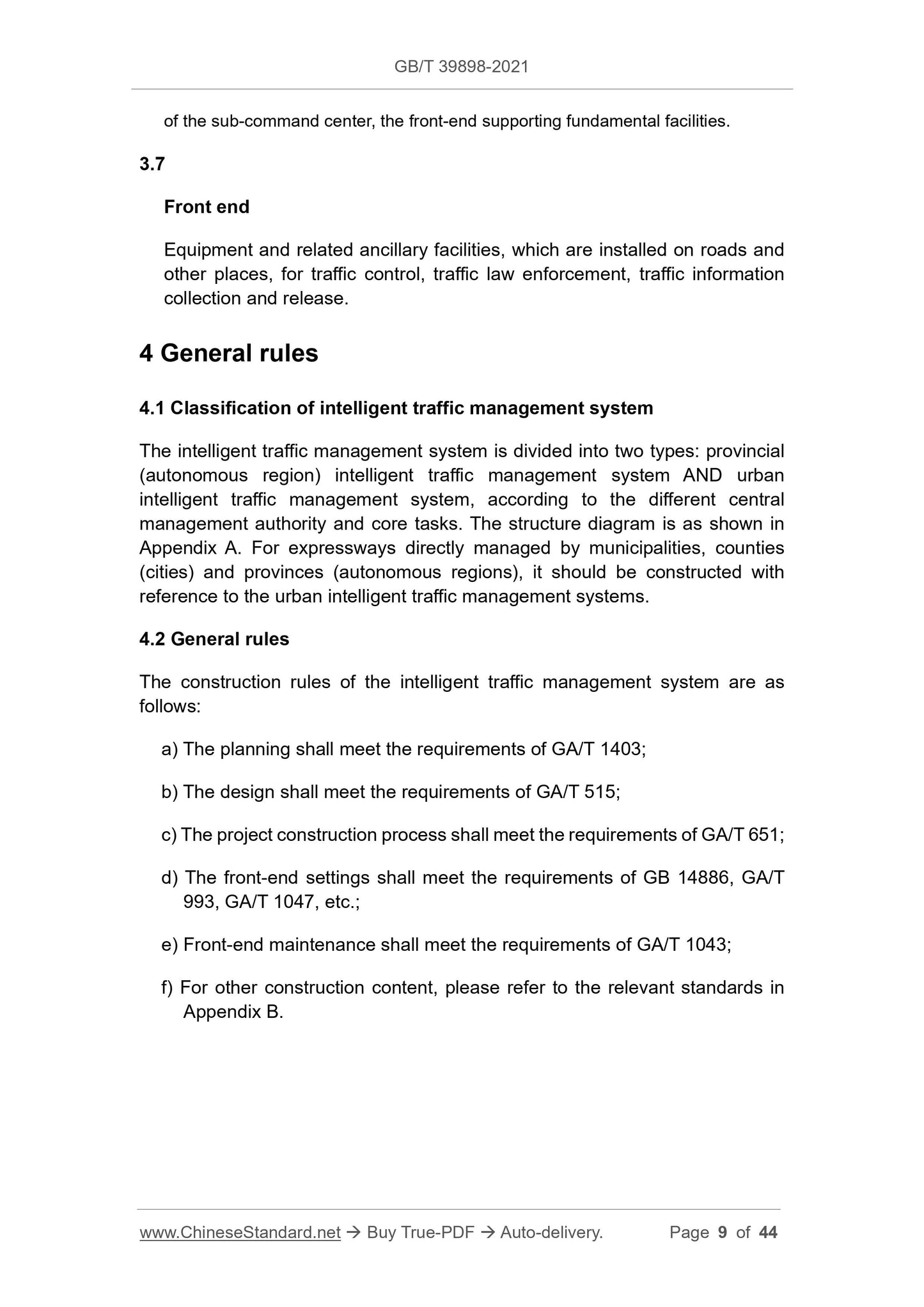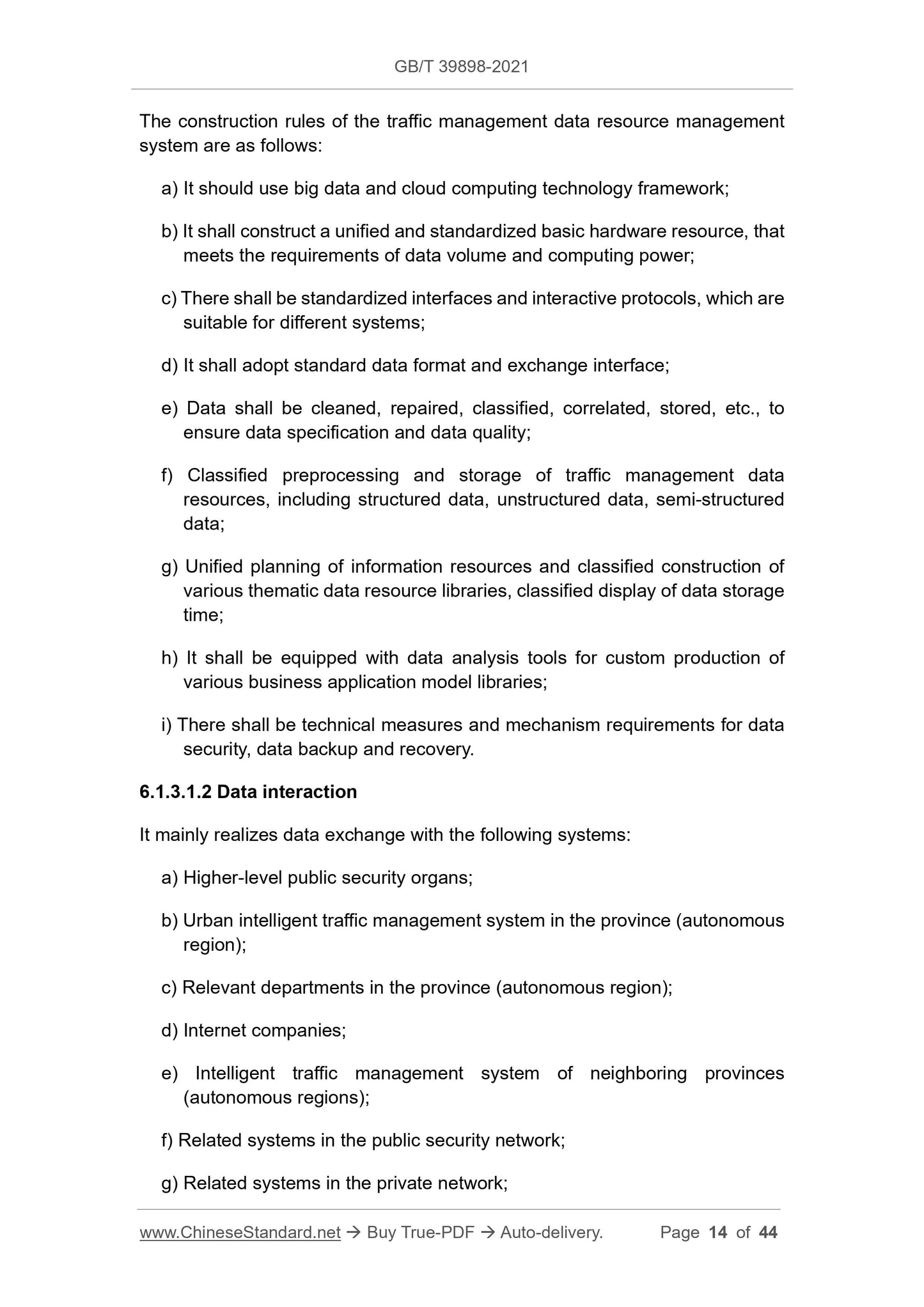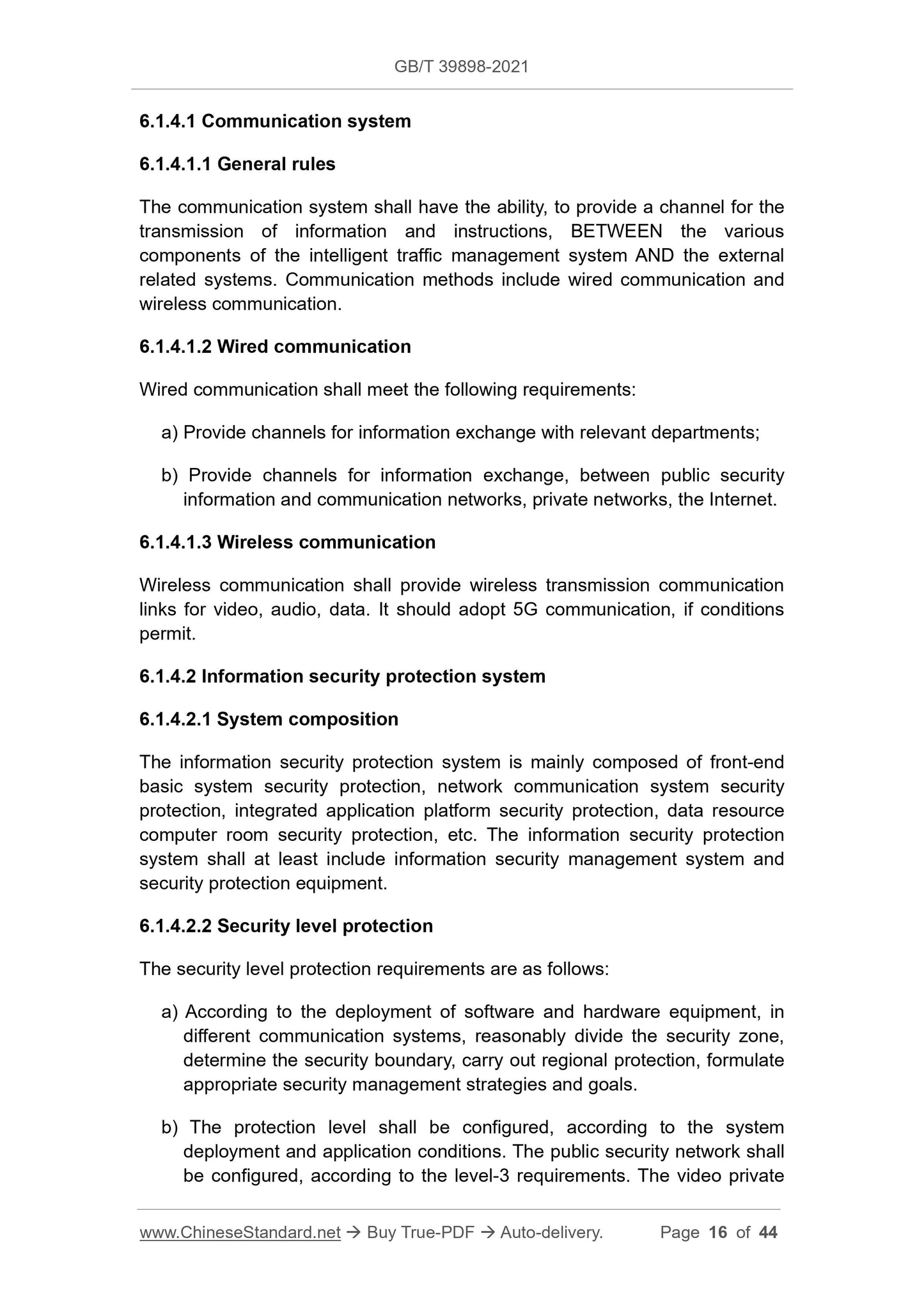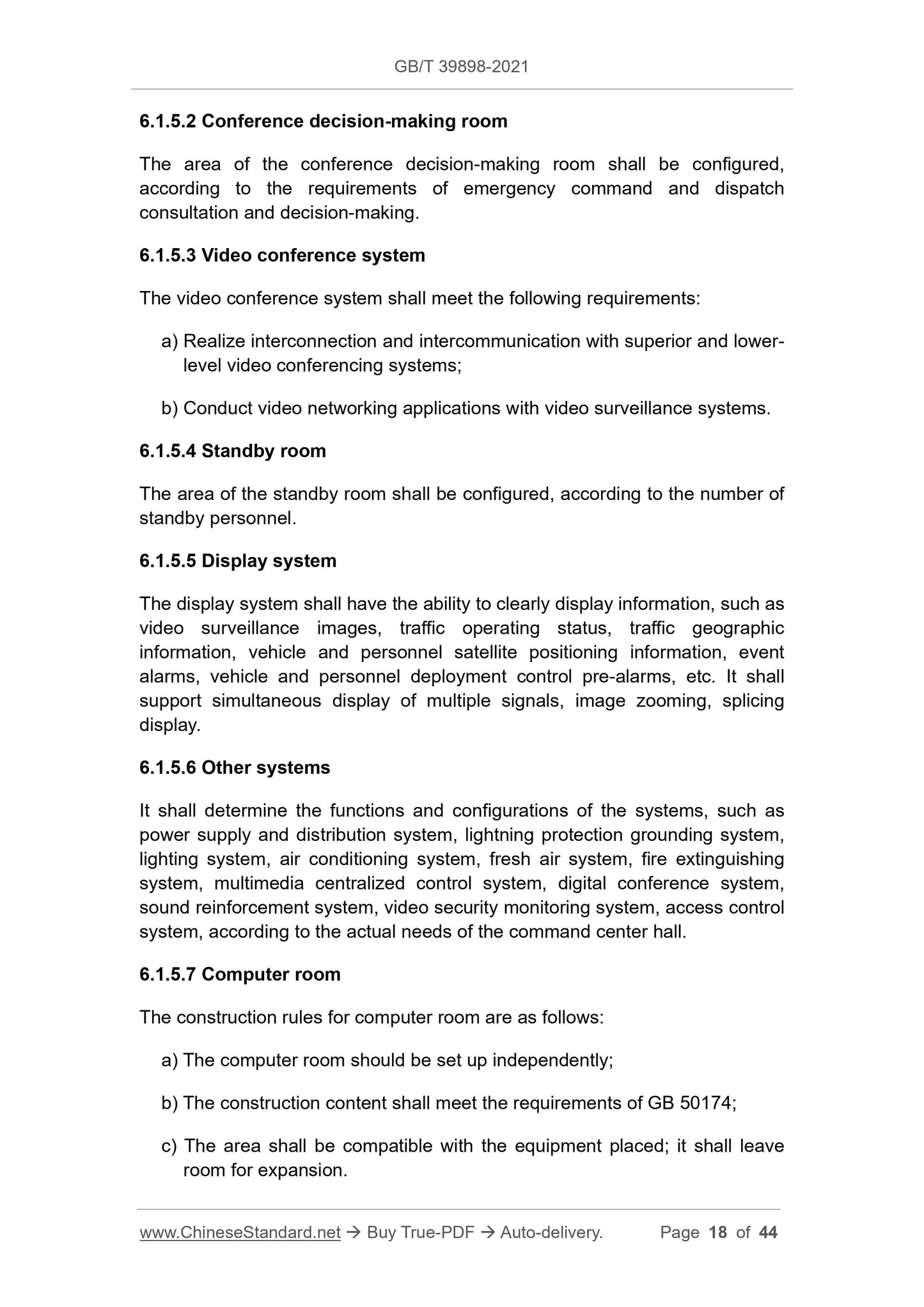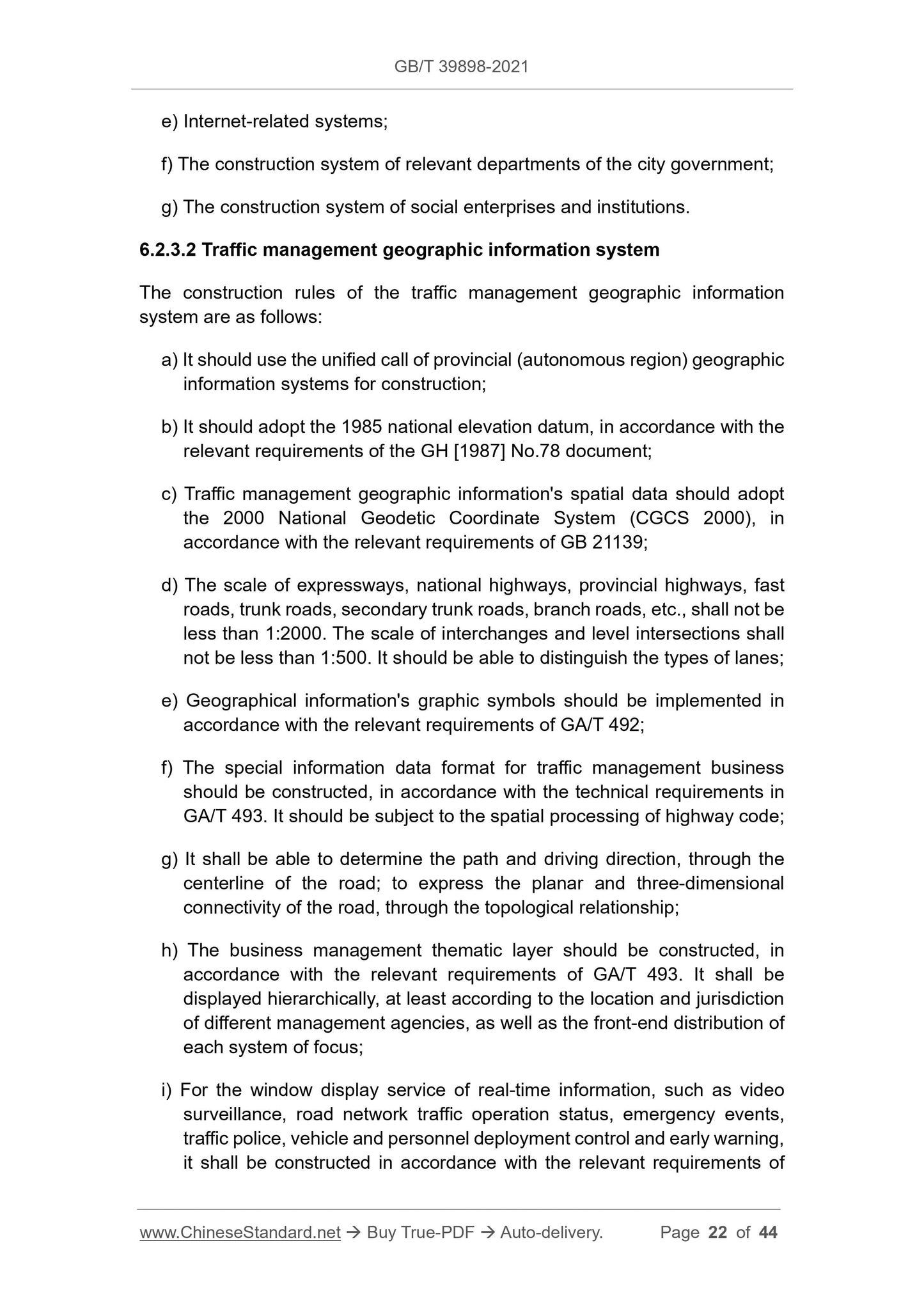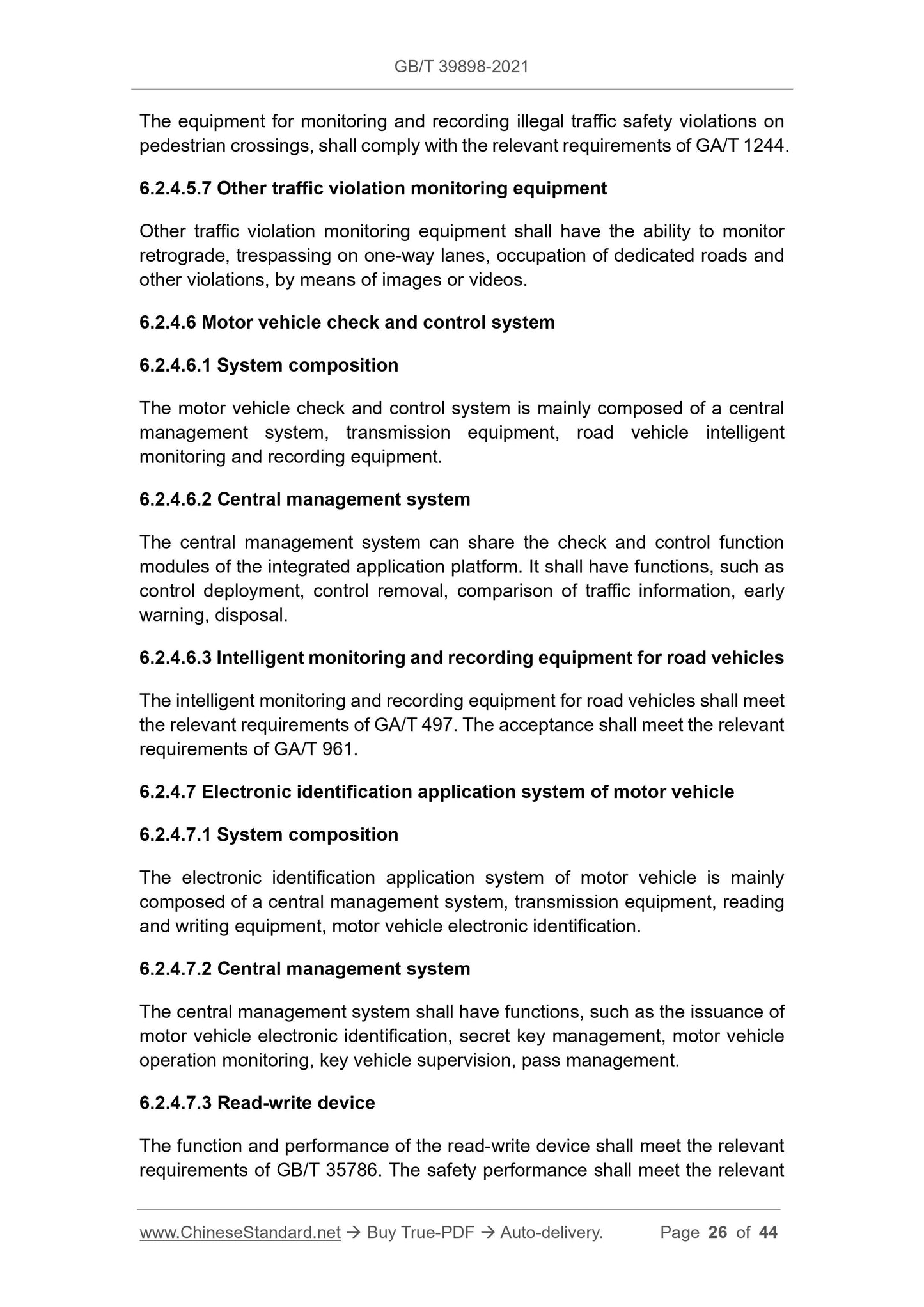1
/
of
10
www.ChineseStandard.us -- Field Test Asia Pte. Ltd.
GB/T 39898-2021 English PDF (GB/T39898-2021)
GB/T 39898-2021 English PDF (GB/T39898-2021)
Regular price
$405.00
Regular price
Sale price
$405.00
Unit price
/
per
Shipping calculated at checkout.
Couldn't load pickup availability
GB/T 39898-2021: Technical specifications for the construction of intelligent traffic management system
Delivery: 9 seconds. Download (and Email) true-PDF + Invoice.Get Quotation: Click GB/T 39898-2021 (Self-service in 1-minute)
Newer / historical versions: GB/T 39898-2021
Preview True-PDF
Scope
This standard specifies the composition and technical requirements of theintelligent traffic management system.
This standard applies to the planning, design, construction of intelligent traffic
management systems in provinces (autonomous regions, municipalities),
districted cities, counties (cities).
Basic Data
| Standard ID | GB/T 39898-2021 (GB/T39898-2021) |
| Description (Translated English) | Technical specifications for the construction of intelligent traffic management system |
| Sector / Industry | National Standard (Recommended) |
| Classification of Chinese Standard | R80 |
| Word Count Estimation | 30,350 |
| Issuing agency(ies) | State Administration for Market Regulation, China National Standardization Administration |
Share
